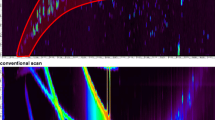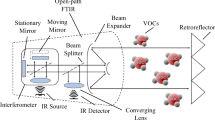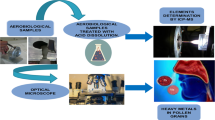Abstract.
The suitability of HPLC combined with ion-trap mass spectrometry was studied for the determination of carbonyl-2,4-dintrophenylhydrazones in ambient air. MS quantification was based on two internal standards and atmospheric pressure chemical ionization in the negative-ion mode. Limits of detection for air samples of 750 L in the full-scan mode varied between 1 and 15 ng m–3 expressed as carbonyl. Limits of quantification were approximately a factor of three higher. This is sufficient for background regions. For sample volumes of 750 L air the instrument response was linear from 10 ng m–3 to 800 µg m–3 for carbonyls and from 3 ng m–3 to 250 ng m–3 for dicarbonyls. Besides complete method validation, quantitative results for six air samples from four background sampling sites in North and Central Europe were compared with those obtained by use of HPLC–UV. Thirty-six carbonyl compounds could be identified and twenty-four were quantified. Values for major compounds, i.e. those present at levels well above the UV detection limits (9 to 18 ng m–3), deviated by less than 20%.
Similar content being viewed by others
Author information
Authors and Affiliations
Additional information
Electronic Publication
Rights and permissions
About this article
Cite this article
Brombacher, S., Oehme, M. & Dye, C. Qualitative and quantitative analysis of carbonyl compounds in ambient air samples by use of an HPLC–MSn method. Anal Bioanal Chem 372, 622–629 (2002). https://doi.org/10.1007/s00216-001-1227-1
Received:
Revised:
Accepted:
Published:
Issue Date:
DOI: https://doi.org/10.1007/s00216-001-1227-1




